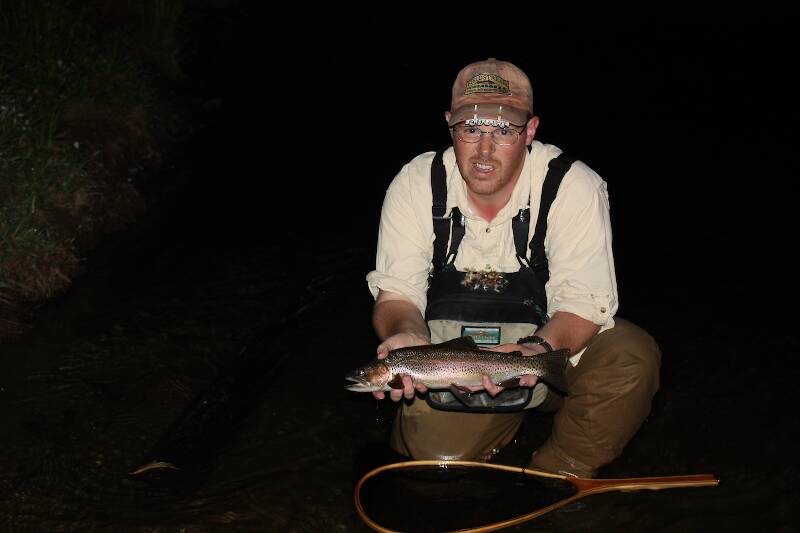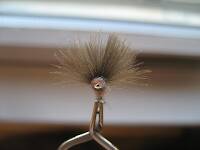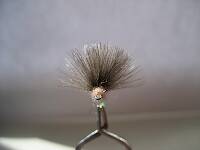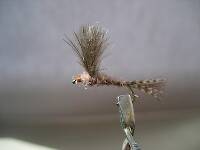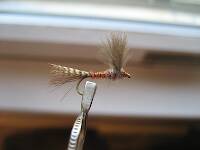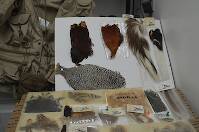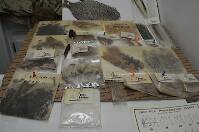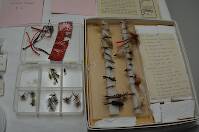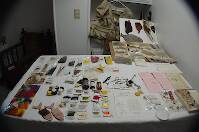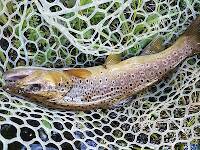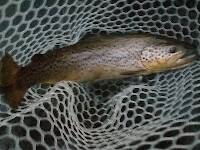
Hex Mayflies
Hexagenia limbata
The famous nocturnal Hex hatch of the Midwest (and a few other lucky locations) stirs to the surface mythically large brown trout that only touch streamers for the rest of the year.
Featured on the forum

Troutnut is a project started in 2003 by salmonid ecologist Jason "Troutnut" Neuswanger to help anglers and
fly tyers unabashedly embrace the entomological side of the sport. Learn more about Troutnut or
support the project for an enhanced experience here.
Dreedee
Posts: 16
Posts: 16
Dreedee on Jul 29, 2008July 29th, 2008, 11:07 am EDT
I haven't had much luck keeping snowshoe hare-winged dries afloat, which is too bad, as the trout were crazy about it on a sulfur pattern I tied. Are there some rabbits with more buoyant fur than others? If so, I'd like to find where I can get them. I tie lots of comparaduns, which are wonderful. And I DO use CDC for the #26-#28 bwos of summer, though I hate how I have to keep changing flies. Snowshoe that floated well would be the ticket. Any suggestions?
JOHNW on Jul 29, 2008July 29th, 2008, 12:41 pm EDT
Bill,
this may sound a little codescending at first but please humor me.
Where on the animal is the fur you were using?
This is a very important consideration as the body hair is much more susceptable to becoming waterlogged. The best hair for wining comes from the foot.
The next question is how are you tying the hair in?
Assuming the answer to the first question was from the foot try tying the hair in by the tips. This is contrary to what we all learn re: tying in hair wings but with the snowshoe it puts the heaviest amount of oil out where it will do the most good.
Finally are you using a dyed foot (again asssuming you are using the foot)? If so they tend to be less abundant in the oils which are so beneficial in maintaining flotation.
All in all I have had considerable success with snowshoe but it still does require occaisional dressing to keep floating.
JW
this may sound a little codescending at first but please humor me.
Where on the animal is the fur you were using?
This is a very important consideration as the body hair is much more susceptable to becoming waterlogged. The best hair for wining comes from the foot.
The next question is how are you tying the hair in?
Assuming the answer to the first question was from the foot try tying the hair in by the tips. This is contrary to what we all learn re: tying in hair wings but with the snowshoe it puts the heaviest amount of oil out where it will do the most good.
Finally are you using a dyed foot (again asssuming you are using the foot)? If so they tend to be less abundant in the oils which are so beneficial in maintaining flotation.
All in all I have had considerable success with snowshoe but it still does require occaisional dressing to keep floating.
JW
"old habits are hard to kill once you have gray in your beard" -Old Red Barn
Dreedee
Posts: 16
Posts: 16
Dreedee on Jul 29, 2008July 29th, 2008, 2:04 pm EDT
John:
I'm laughing at myself; should've mentioned that the hair off the hare DID come from it's foot. It was, I believe a pair distributed by Harleline, and was not dyed. I was just curious, as I'd read online that so many fly fishers swear by the stuff. It ties great and seems to attract trout, but, as I said, I had a hard time keeping the fly afloat.
I'm laughing at myself; should've mentioned that the hair off the hare DID come from it's foot. It was, I believe a pair distributed by Harleline, and was not dyed. I was just curious, as I'd read online that so many fly fishers swear by the stuff. It ties great and seems to attract trout, but, as I said, I had a hard time keeping the fly afloat.
Martinlf on Jul 29, 2008July 29th, 2008, 3:14 pm EDT
Dreedee,
Adding to JohnW's suggestions, I'd say, if you use enough hair, the right kind of hair, and don't use the wrong kind of floatant on it, snowshoe will float very well.
I typically make sure to get a substantial wing tied of the underfur on the foot. I think the soft, dense underfur holds air better and floats better. One can't use a standard floatant, such as Gink on it. Harrop's CDC preen oil floatant works, and so does Frog's Fanny, which I prefer.
Hope this helps.
Adding to JohnW's suggestions, I'd say, if you use enough hair, the right kind of hair, and don't use the wrong kind of floatant on it, snowshoe will float very well.
I typically make sure to get a substantial wing tied of the underfur on the foot. I think the soft, dense underfur holds air better and floats better. One can't use a standard floatant, such as Gink on it. Harrop's CDC preen oil floatant works, and so does Frog's Fanny, which I prefer.
Hope this helps.
"He spread them a yard and a half. 'And every one that got away is this big.'"
--Fred Chappell
--Fred Chappell
JAD on Jul 30, 2008July 30th, 2008, 11:33 am EDT
(I haven't had much luck keeping snowshoe hare-winged dries afloat, which is too bad, as the trout were crazy about it on a sulfur pattern I tied.)
Hi Bill
I have had the same thoughts about Snow shoe hair flies till I started to use (Dry Magic) by Tiemco, solved my problem.
JaD
Hi Bill
I have had the same thoughts about Snow shoe hair flies till I started to use (Dry Magic) by Tiemco, solved my problem.
JaD
They fasten red (crimson red) wool around a hook, and fix onto the wool two feathers which grow under a cock’s wattles, and which in colour are like wax.
Radcliffe's Fishing from the Earliest Times,
JOHNW on Jul 30, 2008July 30th, 2008, 2:54 pm EDT
Bill,
Another thing to consider is that part of what makes Snowshoe flies like the Usual so effective is their low floating nature. I find they are not quite as effective when "floating like a cork". That being said a squeeze in the amadou followed with a liberal dose of Frogs Fanny and as long as I don't start fishing for squirrels (I guess that would be better described as "Squirreling")one fly is all I need on light to medium pocket water with trout accustomed to looking up.
JW
Another thing to consider is that part of what makes Snowshoe flies like the Usual so effective is their low floating nature. I find they are not quite as effective when "floating like a cork". That being said a squeeze in the amadou followed with a liberal dose of Frogs Fanny and as long as I don't start fishing for squirrels (I guess that would be better described as "Squirreling")one fly is all I need on light to medium pocket water with trout accustomed to looking up.
JW
"old habits are hard to kill once you have gray in your beard" -Old Red Barn
Quick Reply
Related Discussions
Topic
Replies
Last Reply
5
Mar 5, 2018
by Wbranch
by Wbranch



